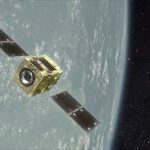The funding will enable Relativity Space to accelerate its planned initiatives, including its factory of the future, launch vehicle development, and 3D printing technologies.
 Relativity Space, the first company to 3D print an entire rocket and build the largest metal 3D printers in the world, has closed a $500m Series D equity funding round.
Relativity Space, the first company to 3D print an entire rocket and build the largest metal 3D printers in the world, has closed a $500m Series D equity funding round.
The round was led by Tiger Global Management with participation from new investors Fidelity Management & Research Company LLC, Baillie Gifford, ICONIQ Capital, General Catalyst, XN, Senator Investment Group, and Elad Gil.
Existing investors participating in the round include BOND, Tribe Capital, K5 Global, 3L, Playground Global, Mark Cuban, Spencer Rascoff, and Allen & Company LLC, among others.
The funding will enable Relativity Space to accelerate its planned initiatives, including its factory of the future, launch vehicle development, and 3D printing technologies.
Relativitys supply chain enables the company to build its orbital rocket, Terran 1, with 100x fewer parts in less than 60 days. By fusing 3D printing, artificial intelligence, proprietary software, and autonomous robotics, Relativitys team is creating an entirely new value chain for aerospace, starting with an orbital launch.
Relativity is well on its way to launching the worlds first entirely 3D printed rocket to orbit, only the first step in a long-term vision to upgrade humanitys industrial base on earth and build one on Mars.
This past year drove change in every industry, including aerospace. Throughout 2020, Relativity achieved unprecedented growth, attracted top talent, and stepped up to deliver results we could have only imagined when we started the company less than five years ago, said Tim Ellis, Relativity Spaces co-founder and CEO. We are on track to launch our first Terran 1 rocket to orbit next year with existing capital on our balance sheet. With this new Series D funding, we will now dramatically accelerate the development of our long-term plans and look beyond the first launch.
He added: “What we are building at Relativity fundamentally rewrites that tech stack. At its heart, 3D printing is an automation technology, one that transforms physical complexity into software by stitching many components together. The compounding rate of improvement and iteration possible through our disruptive approach will be unlike anything seen before. If we are going to live on Mars, it is inevitable that this factory of the future must exist to build humanitys industrial base once there. At Relativity, we look forward to furthering an iconic new technology to build the future of humanity in space, faster.
















































































